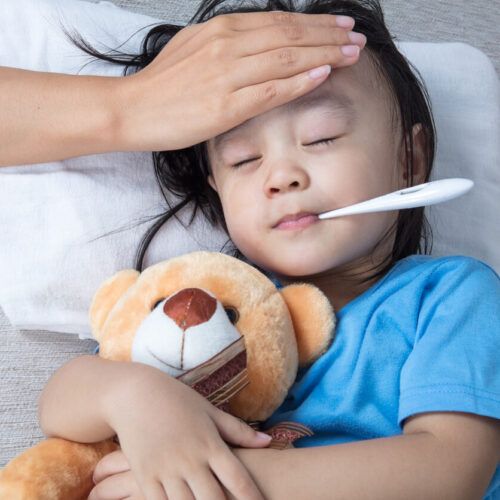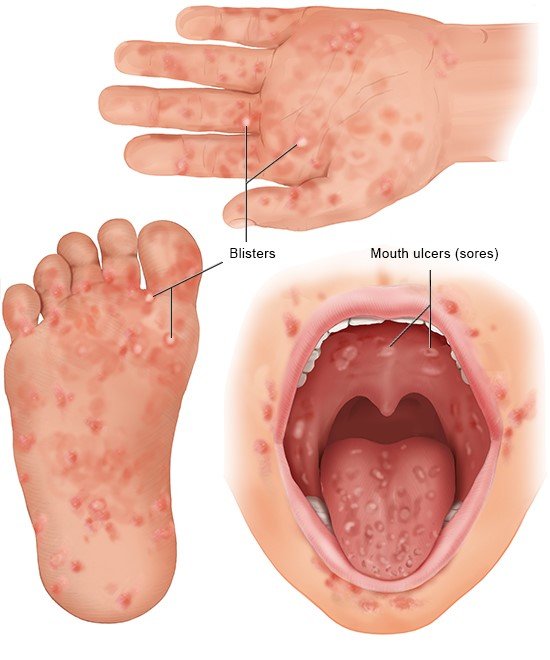
With hand, foot and mouth cases surging 150% against last month, HCMC’s Health Department is preparing to cope with a potential outbreak.
In the past week the city recorded 423 cases, up 2.5 times against four weeks ago, according to the city’s Center for Disease Control and Prevention. The rise is recorded both in the number of inpatients and outpatients.
Compared to the same period last year, the current number of cases has dropped by 53%. Now the Department of Health is preparing for the worst-case scenario in which 100-200 new cases must be admitted each day while 700-1,400 cases have already been hospitalized for treatment and 70-140 of them are severe cases.
What is Hand, Foot and Mouth Disease(HFMD)?
Hand, foot, mouth disease (HFMD) is a viral infection caused by the Coxsackie virus and Enterovirus. It affects both adults and children. Young children under the age of 5 are most susceptible.
How do you know if your child has HFMD?

The following symptoms may appear 3 – 5 days after exposure:
- Typically, rashes with small blisters may appear on the hands (palms), feet (soles), and buttocks
- Sore throat and ulcer in the mouth and tongue
- Fever
- Runny nose
- Vomiting and diarrhoea
- Loss of appetite
How can your child get HFMD?
HFMD can be easily spread through direct contact with nasal discharge, saliva, faeces, and fluid from the blisters. Contaminated articles such as toys, shared eating utensils and towels, can also spread the virus indirectly.
What are the complications of HFMD?
The greatest risk is dehydration from poor feeding in young children. Serious complications are uncommon.
What should you do if you suspect your child has HFMD?
Consult a doctor early if your child shows symptoms of HFMD.
When does your child need urgent medical attention?
Seek immediate medical attention:
- When your child’s fluid intake is poor, is unable to swallow or has persistent vomiting
- When your child’s tongue is dry, and the urine output decreases
- If your child appears lethargic, drowsy or irritable, is crying persistently, or is disorientated
What is the treatment for HFMD?
Most children will take 7 – 10 days to recover. There is no specific treatment for HFMD. Antibiotics are not effective and not indicated. Medications can be given to relieve the above symptoms, such as fever, runny nose and mouth ulcer.
How can you help your child with HFMD?
Your child may refuse to eat or drink because swallowing will be painful. It is important to ensure an adequate fluid intake to prevent dehydration. Offer small feeds at frequent intervals. Extra fluids are needed when a fever is present. Allow your child to get ample rest.
Do not attempt to break the blisters. Allow them to dry naturally.
How can you prevent the spread of HFMD?
Infected children should not go to school, childcare centres or crowded public places until fully recovered.
Wash your child’s hands immediately and thoroughly with soap and water after each contact with the infected child, changing of diaper, and before handling food.
If you suspect your child to have HMFD, please seek for medical assistant as soon as possible to confirm the symptoms. Pediatrician will prescribe medications to ease your children’s symptoms, as well as offer advice and precautions for a faster recovery.




